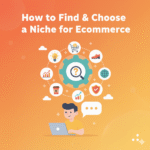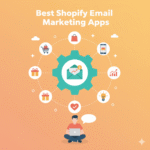I’ve worked on ecommerce and SEO for years, and I’ve seen one thing clearly:
Most Shopify stores don’t fail because of bad products. They fail because no one knows they exist.
So in this guide, I’ll break down how to market a Shopify store from scratch, even if:
- you’re a new brand,
- you have a low budget,
- you don’t know paid ads deeply yet,
- or you want long-term organic traffic.
Let’s start simple and build step by step.
1. Fix Your Foundation Before Marketing (Most People Ignore This Part)
The biggest mistake I’ve seen with Shopify brands is they rush into ads or Instagram marketing, but the website itself is not ready.
If your homepage or product page is weak, even the best marketing won’t convert.
Your Homepage Must Answer 3 Things in 3 Seconds
When someone opens your site, they instantly scan for three things:
- What do you sell?
- Why are you unique?
- What should I do next?
This is where your value proposition matters.
Don’t write generic lines like “Welcome to our store.”
Instead, write something crisp and benefit-focused, like:
“Premium personalised pet products delivered across India. Made with safe materials, trusted by 40,000+ pet parents.”
This is clear, direct, and builds trust instantly.
Product Pages Matter More Than Marketing
Most people think ads are everything.
But honestly, product pages convert sales — not ads.
Your product page should feel like a mini landing page, not a basic Shopify template.
Focus on:
- Benefits before features
- Clear high-quality images (multiple angles)
- Short demonstration videos
- Trust badges (secure checkout, fast delivery)
- Reviews, testimonials, UGC videos
- Clear shipping, return, and refund policies
Products don’t sell themselves.
Your product presentation sells them.
Fix Speed, Mobile Layout, and Checkout
Most Shopify users are on mobile.
If your site is slow or the fonts are small, people leave instantly.
Check these things:
- Buttons must be big and clickable
- Text must be readable on mobile
- Checkout should be 1–2 steps
- Remove unnecessary apps that slow loading
- Compress images for faster speed
Your marketing becomes 10x more effective once your store is fast and mobile-friendly.
2. Start With Shopify SEO (Free, Long-Term & Scalable)
SEO is still one of the strongest ways to get consistent customers for free.
But you have to do it the right way.
Start With Category Keywords, Not Just Product Keywords
One mistake new brands make is targeting very specific product keywords.
But category keywords bring much more traffic.
Examples:
- customised dog collars
- organic skincare for men
- minimalist gold jewellery
Category pages rank faster and convert better because customers explore multiple products.
Write Human-Friendly Product Descriptions
Never copy manufacturer text.
Write like you’re talking to a friend.
Tell them:
- Why this product matters
- What problem it solves
- What makes it better than alternatives
- How to use it
- Who it’s perfect for
SEO improves, and conversions improve.
Add Blogging for Long-Term Traffic
Your Shopify website needs content.
Good content builds trust and brings search traffic.
Useful topics include:
- “How to choose the right XYZ”
- “Best XYZ products in India (2026 list)”
- “Beginner-friendly guide to using XYZ”
Blogs are your secret weapon for ranking high-intent keywords.
Use SEO Apps Smartly
SEO apps help, but don’t rely only on them.
Useful apps include:
- SearchPie
- Yoast
- TinyImg
But SEO mainly depends on good content, clean structure, and fast site speed.
3. Social Media Marketing (Brand + Consistency + Personality)
People don’t buy products first.
They buy the brand personality first.
Instagram & Reels Are Mandatory
Use Instagram as your biggest brand-building tool.
Create:
- Product showcase reels
- Behind-the-scenes videos
- Packaging clips
- Customer stories
- Before vs After videos
- Founder storytelling reels
Instagram is not always for directly selling — it’s for creating trust and interest.
Create TikTok/Shorts Style Videos
Short-form content works extremely well for ecommerce.
Ideas that always perform:
- “5 reasons why this product actually works”
- “POV: You found the perfect XYZ”
- Quick transformations or demo videos
- Unboxing reels
If your niche is visual (beauty, fashion, home decor, wellness), short videos will drive most of your traffic.
Use Micro-Influencer Marketing
You don’t need celebrities or large creators.
Influencers with 5,000–30,000 followers often convert better because:
- They have niche audiences
- They charge low or accept barter
- Their audience trusts them more
Offer them:
- Free products
- Affiliate commission
- Sponsored reels
Always track performance using Shopify discount codes or UTM links.
4. Paid Ads for Fast Traffic (Google + Meta)
If you want quick sales, ads are important.
But start slowly.
Google Ads for High-Intent Buyers
Google is great for users already searching for what you sell.
Best ad types:
- Google Shopping Ads
- Search Ads for product keywords
- Brand Search Ads
- Performance Max campaigns
These ads attract credit-card-ready users.
Meta Ads for Discovering New Customers
Instagram + Facebook ads work well for impulse buys.
Start with small budgets (₹300–₹500/day).
Use:
- UGC-style videos
- Problem vs Solution ads
- Founder story videos
- Lifestyle visuals
Scale slowly as you understand what works.
Retargeting Ads Are High ROI
Most people don’t buy on the first visit.
Retarget:
- Viewers of product pages
- Add-to-cart users
- Instagram engagers
- Website visitors
These ads usually have 5x–10x ROAS and are essential for maximizing return on ads.
5. Content Marketing (Your Quiet But Most Powerful Weapon)
Good content builds loyalty, authority, and trust.
Create Helpful Non-Sales Content
People don’t trust a new brand immediately.
Content earns that trust.
Create:
- How-to guides
- Tutorials
- Comparison content
- UGC compilations
- Pinterest infographics
- Short educational videos
- Blogs optimized for SEO
- YouTube Shorts with product tips
When your content helps people, they automatically trust your products.
Use Email & SMS Marketing
Most ecommerce revenue comes from returning buyers, not first-time buyers.
Setup automation for:
- Welcome series
- Abandoned cart reminders
- Post-purchase upsells
- Win-back campaigns
- Birthday/anniversary discounts
- Product usage education emails
Tools like Klaviyo and Omnisend make automation easy.
6. Build Trust (This Is Real Marketing in 2026)
A visitor becomes a customer only when they trust the brand.
Add:
- Real customer reviews
- Before-and-after photos
- UGC videos from real buyers
- Clear founder story
- A WhatsApp support number
- A genuine return policy
- Fast delivery badge
- Expected delivery date on every product page
Small trust elements significantly improve conversions.
7. Use Marketplaces for Extra Awareness (Optional)
Shopify can be your main brand website, but marketplaces can bring new eyeballs.
List on:
- Amazon
- Flipkart
- Meesho
- Myntra (fashion and apparel)
Marketplaces give brand exposure while Shopify remains your main hub.
8. Make Your Content AEO-Optimized (for AI Search Results in 2026)
AI search engines now control a lot of buyer discovery.
To appear in ChatGPT, Bard, Perplexity, and Gemini results:
- Add short, direct answer boxes in your content
- Add FAQs in product pages and blogs
- Write definition-style intros
- Use clean formatting
- Add “What this means for you” sections
- Keep content helpful and structured
This boosts visibility in AI-powered search engines.
9. Realistic 30-Day Marketing Plan for a Shopify Store
Here’s a simple plan beginners can follow:
Week 1:
- Fix homepage
- Improve product pages
- Upload 3 best-selling products
- Add 3 SEO-optimized blogs
- Setup basic email automations
Week 2:
- Film 10 reels + 5 product images
- Start posting daily
- Collaborate with 2 micro influencers
Week 3:
- Start Google Shopping ads
- Start Meta retargeting ads
- Add more UGC content
Week 4:
- Publish more blogs
- Launch a seasonal discount campaign
- Analyse data and scale the strategies that worked
Conclusion
To market a Shopify store, improve your homepage and product pages, do SEO correctly, create content consistently, post engaging social content, collaborate with influencers, run Google + Meta ads, optimize for mobile, build trust, and use email/SMS automation. Combining organic and paid marketing ensures both quick results and long-term growth.
Discover more from PratsDigital
Subscribe to get the latest posts sent to your email.


Pingback: How to Get Your Shopify Page on the Front Page of Google - PratsDigital